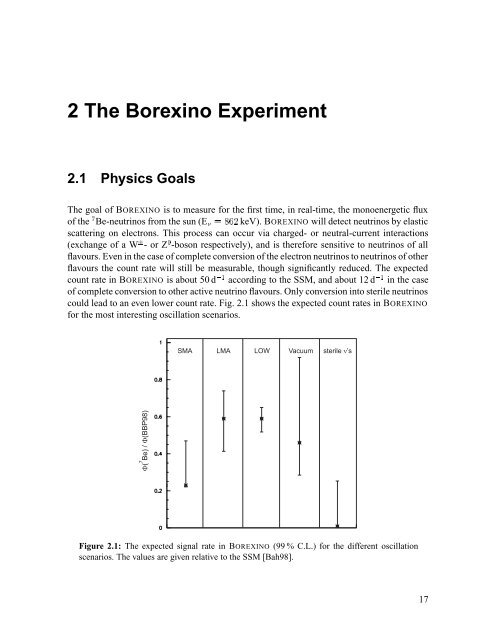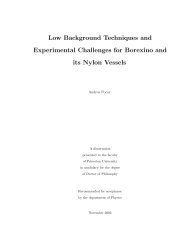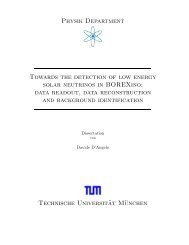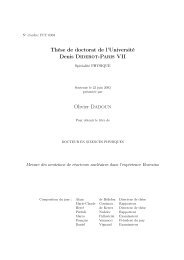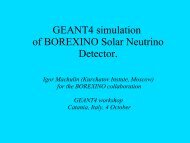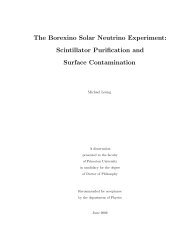Development of a Liquid Scintillator and of Data ... - Borexino - Infn
Development of a Liquid Scintillator and of Data ... - Borexino - Infn
Development of a Liquid Scintillator and of Data ... - Borexino - Infn
Create successful ePaper yourself
Turn your PDF publications into a flip-book with our unique Google optimized e-Paper software.
2 The <strong>Borexino</strong> Experiment<br />
2.1 Physics Goals<br />
The goal <strong>of</strong> BOREXINO is to measure for the first time, in real-time, the monoenergetic flux<br />
<strong>of</strong> the Be-neutrinos from the sun (E keV). BOREXINO will detect neutrinos by elastic<br />
scattering on electrons. This process can occur via charged- or neutral-current interactions<br />
(exchange <strong>of</strong> a W ¦ -orZ-boson respectively), <strong>and</strong> is therefore sensitive to neutrinos <strong>of</strong> all<br />
flavours. Even in the case <strong>of</strong> complete conversion <strong>of</strong> the electron neutrinos to neutrinos <strong>of</strong> other<br />
flavours the count rate will still be measurable, though significantly reduced. The expected<br />
count rate in BOREXINO is about 50 d according to the SSM, <strong>and</strong> about 12 d in the case<br />
<strong>of</strong> complete conversion to other active neutrino flavours. Only conversion into sterile neutrinos<br />
could lead to an even lower count rate. Fig. 2.1 shows the expected count rates in BOREXINO<br />
for the most interesting oscillation scenarios.<br />
Figure 2.1: The expected signal rate in BOREXINO (99 % C.L.) for the different oscillation<br />
scenarios. The values are given relative to the SSM [Bah98].<br />
17


